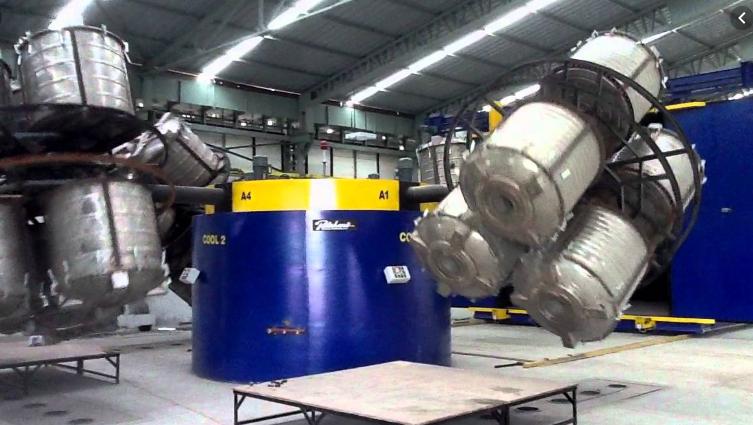Rotational Molding
Rotational Molding may be a Process wont to Produce Hollow and Seamless Plastic Parts.
The Rotational Molding process may be a manufacturing method that yields hollow plastic parts. Traditional applications for rotationally molded parts include large storage tanks, toys, kayaks, fuel tanks, hydraulic tanks, coolers, storage, and recreational equipment. one among the good features of rotational molding is that the ability to integrate several metal parts into one multi functional plastic part. This not only eliminates assembly time and price but also can end in a more useful spare improved styling and ergonomics.

To manufacture a neighborhood, a metal mold is mounted to an arm on a molding machine. The mold is crammed with a measured charge of powdered resin and is slowly rotated on two axes within the convection oven chamber where it’s heated quickly with turbulent hot air. During the first stages of the molding cycle, the powder flows over the inside surfaces of the mold because it falls to the rock bottom of the mold. because the mold heats and reaches the freezing point of the resin, thin layers of melted material are distributed evenly until the powder pool is exhausted. The heating cycle continues to finish the sintering process. The “cure” point is reached when most or all bubbles are eliminated from the melt. The mold and part are then cooled to the acceptable de-molding temperature with a mixture of fan blown air and water spray. Finished parts are removed, and moulds are prepped and charged for the subsequent cycle.
While the oven residency time is usually 15-25 minutes, molding machines typically have 3 or 4 arms that cycle in succession, yielding production rates within the one part per one to 2 hour range.
Product Range for applications include:
![SRI SHYAM ADDITIVES [P] LIMITED](https://srishyamadditives.in/wp-content/uploads/2020/07/cropped-png-352x87.png)